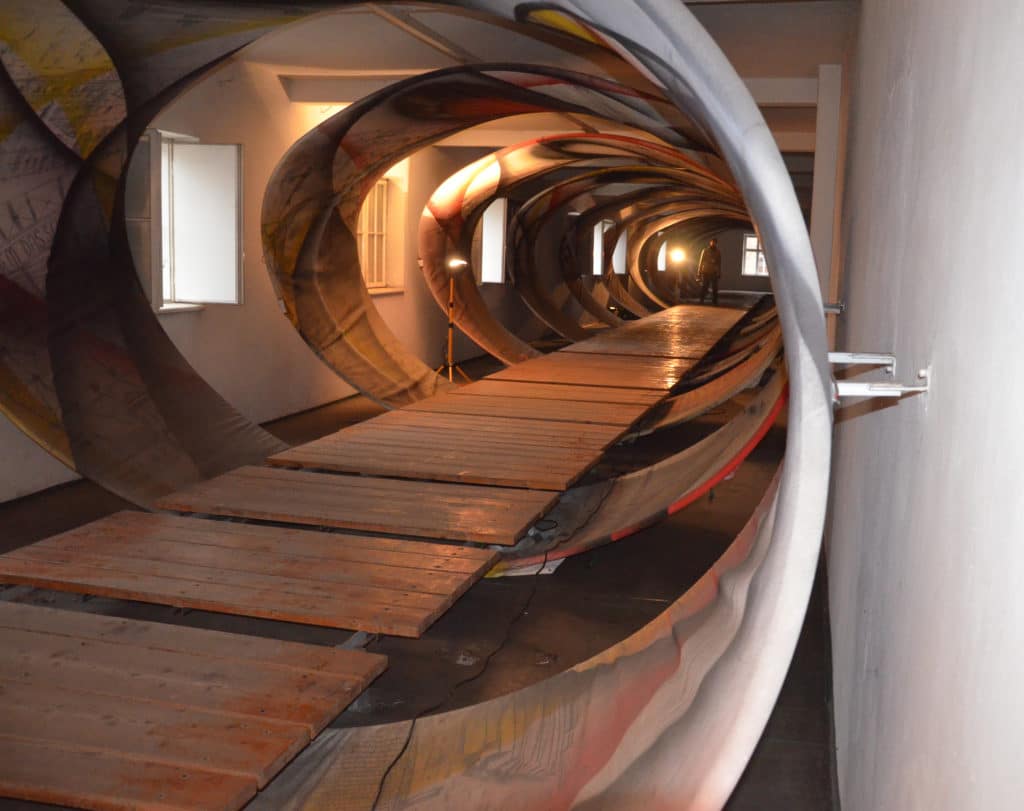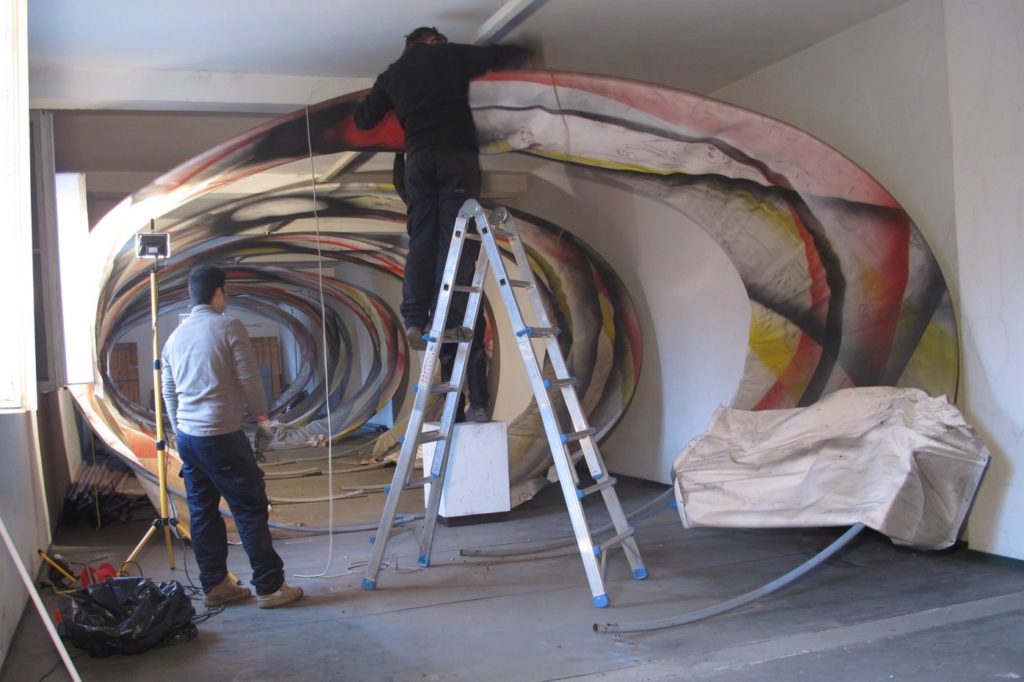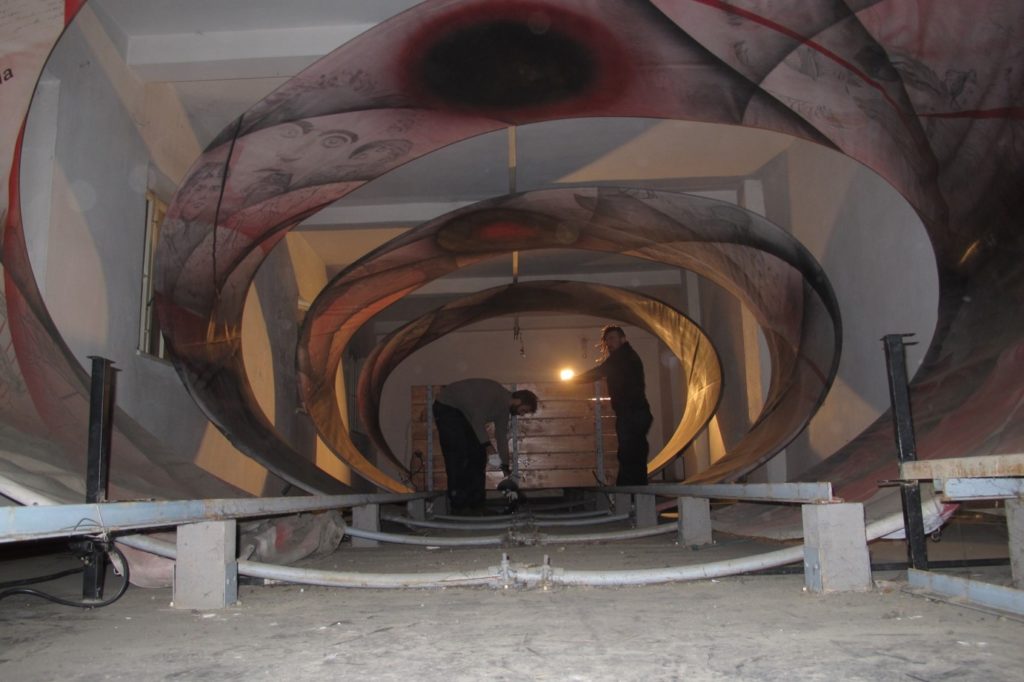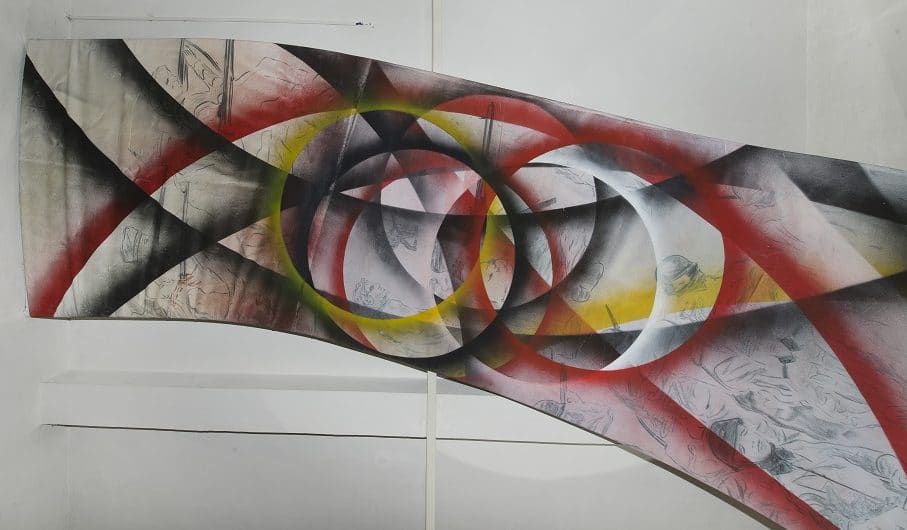The Italian Memorial at Auschwitz
Dismantling, transport and storage of the Italian Memorial in Block 21, in the Auschwitz-Birkenau Memorial and Museum
Some projects are unique and unrepeatable experiences. The dismantling of the installation in Block 21 of the Auschwitz-Birkenau Memorial and Museum is undoubtedly one of these, not only due to technical and logistical difficulties, but above all for the emotional impact of operating in a place so dense with meaning for the whole of humanity.
The 1979 Italian installation was closed to the public in 2008. Since then the Management of the Museum had requested that the monument be removed and replaced by one which better fits contemporary concepts of historical documentation and which takes into account the modern world order following the fall of the Berlin Wall in 1989.



The authors’ concept for the installation was of a path through memories made up of a spiral tunnel on which were mounted twenty-three canvas paintings, running along a walkway recalling the sleepers of the railway line to the camp, accompanied by a soundtrack composed by Luigi Nono. The operational part of the project started with a photographic documentation campaign and a laser scan map so that this unique installation would be able to be remounted at EX3, a former auditorium in Florence which is being converted into a museum covering the deportation of Italians to the Nazi extermination camps.
The project was very challenging. In the first place, the Auschwitz Memorial has very tight rules governing access and movement, and it was extremely cold. Further, the entire process of maneuvering the delicate paintings onto large rollers was fraught with difficulty: each painting was irregular in form and had been deformed over the years, and rolling them for transport ran the risk of causing further damage both to canvases and the paint. It was particularly difficult to develop an suitable system of protection for the paint layer due to the fragile technique used by the artists, and also to devise an appropriate and accurate cataloguing system so that each canvas could be correctly remounted in the future.

Istituto Superiore per la Conservazione e il Restauro, Roma
Arch. Gisella Capponi, ISCR, Roma
Arch. Giorgio Sobrà, ISCR, Roma
The following details were found on a panel placed at the end of the installation. Project: BBPR Architects (Lodovico Belgiojoso, Enrico Peressutti, Alberico Belgiojoso, Giuseppe Lanzani), Artist: Mario Samonà; Collaborators: Primo Levi, Nelo Risi; Co-ordinator: Giordano Quattri. Date: 1979
Domenico Ventura, Roma
Matteo Rossi Doria, Marco Santancini (CBC)
C.P.T. Studio S.r.l., Roma
Rosa dei Venti S.r.l., Roma